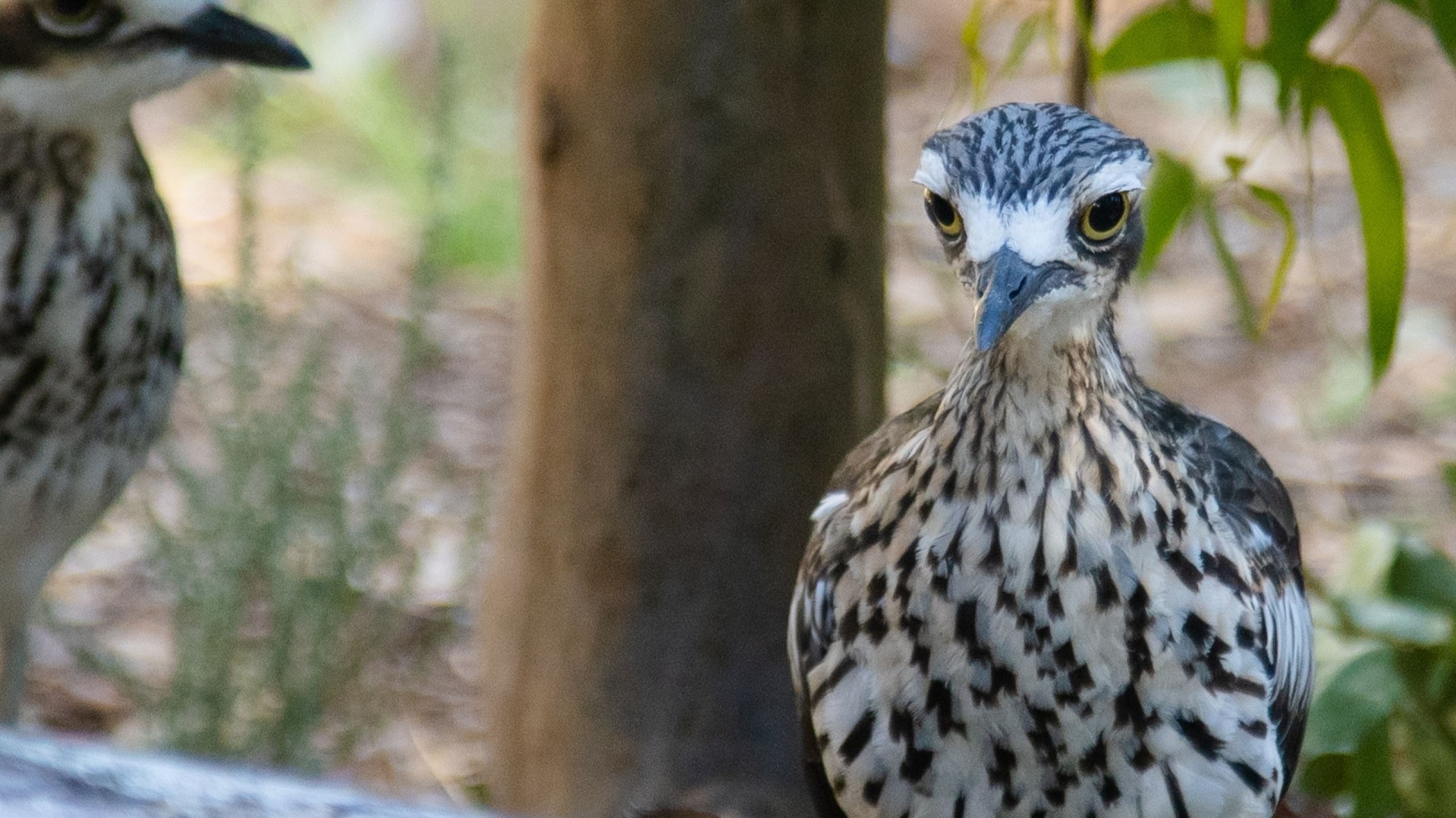Biodiversity recovery with Bush stone-curlews
The Penguin Foundation is proud to be involved in bringing the Bush stone-curlew back to the Island Ark of Millowl. Some other key projects that have been generously funded by our individual donors and partners include:
- Eastern barred bandicoot recovery program success
- Familiarising the local community with Bush stone-curlews
- Feral cat detection dog development
- Threatened flora detection and management
The Nature Parks’ Threatened Species Plan was published in 2019 setting out our commitments to contributing to the conservation of threatened species within local, national and international frameworks.
You can read the full report at https://www.penguins.org.au/conservation/conservation/environment-news/
Our focus is now on the reintroduction of the Bush stone-curlews, a Critically Endangered species in Victoria and we’d like to provide you with an update on this program so you can share this information with visitors and the community.
- We built two aviaries at the Koala Conservation Reserve in late 2021 (Funded by the Penguin Foundation).
- The aviaries provide an enclosed area with shelter to house birds for public display and support public education prior to a future wild release on Millowl.
- In May, all of the birds were given health checks and appear to be in good health (some changes in weights were recorded) and there are no visible signs of health issues. With more wet weather, we will be keeping an eye out for fungal feet conditions and monitoring any water that is pooling in the aviaries.
- We developed the Curlew Custodians Volunteer program to support the provision of care and feeding of the captive birds and add value to the visitor experience.
- We’ve had 21 Volunteers sign up to the Curlew Custodians program and they have contributed over 800 hours to caring for the birds since the program started.
Partnerships with stakeholders are integral to the success of the program and two key partners in the delivery are the Odonata Foundation and Australian National University (ANU).
- An agreement with Odonata Foundation has been developed to foster collaboration with Nature Parks, setting out a framework and major areas of focus for cooperation including the recovery plan for the Bush stone-curlew, the SEASON program, co-management of wildlife populations, potential joint funding bids and potential co-management of new sites.
- ANU has agreed to prepare a Feasibility Study for Nature Parks and Odonata. The study will recommend the strategies with the best prospect for a successful reintroduction of BSC to Phillip Island given existing constraints.
Key messages for this project are as follows:
- The program will contribute to the overall recovery of the Bush stone-curlew in south-eastern Australia through collaborative partnerships with Odonata and ANU.
- It’s a part of PINP’s commitment to recover biodiversity on Phillip Island through implementation of the Threatened Species Plan .
- Bush stone-curlews used to live on Phillip Island, last seen in 1970s, so we’re bringing back a species that was lost.
- The primary outcome is to successfully establish a self-sustaining population of Bush stone-curlew to restore ecological function on Phillip Island.
- It’s a long-term program, and it will take a long time to see results.
- This species is difficult to recover, and we expect setbacks and challenges along the way.
- We are working with our partners to share knowledge, expertise and learnings along this journey.
- The program cannot succeed without the community’s support and involvement and there will be opportunities for community involvement.
To learn more about the species, check out our Nature Notes on the Phillip Island Nature Parks website.
The fun infographic below can be shared with others and stay tuned for more News Posts to keep updated with what’s happening with the program.

